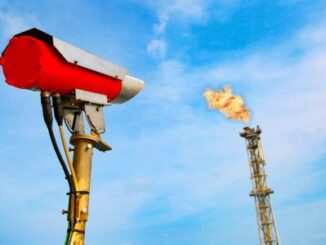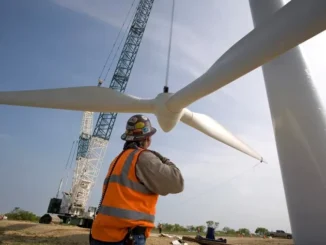
A few weeks ago, the Biden administration convened what it characterized as the “first ever White House Methane Summit” and announced a new cabinet–level task force to focus on accelerating the reduction of methane emissions.
The meeting took place against the backdrop of an ongoing U.S. Environmental Protection Agency effort to finalize its new regulations on methane emissions detection and control from oil and gas operations. Like many other current regulatory initiatives, this one may appear on its face to be a highly partisan and divisive issue — with dueling comment letters, for instance, from Senate Republicans and Democrats. And the fact that the White House didn’t invite any industry representatives to its gathering also didn’t help that perception.
However, there is actually more alignment on the issue of curtailing methane emissions than many realize. For years now, industry has taken aggressive action to detect and mitigate emissions. Moreover, many companies, including Pioneer, Devon and Chevron have supported EPA’s efforts to establish direct federal regulation of methane emissions. As the Environmental Defense Fund noted, this opportunity is “a rare triple win for industry, the climate, and energy security.”
We know two unassailable facts. First, natural gas is and will continue to be the backbone of our energy system. Last year, the U.S. consumed a record amount of natural gas. That growth, according to the U.S. Energy Information Administration, has largely been driven by the electric power sector, which has consumed more natural gas than any other sector for the last five years. In 2022, natural gas comprised almost 40% of utility scale electricity generation. And EIA expects the percentage of U.S. electricity generation from natural gas to remain fairly consistent from 2021 through 2050, even as total power-generation shifts towards more renewables.
Second, methane emissions are a real problem. When in the atmosphere, methane traps 85 times as much heat as carbon dioxide. Not capturing emissions also wastes a resource that could otherwise generate additional revenue. Given the public focus on sustainability as well as corporate commitments, it is in electric utilities’ best interest to ensure that their primary fuel source is as low emission and cost effective as possible.
And that starts with the producers. Recognizing the challenge of meeting market demands and maintaining their social license to operate, energy producers are already making a concerted effort to reduce methane emissions. The latest report from EPA’s 2023 Draft Emissions Inventory shows that U.S. oil and natural gas methane emissions are declining (see page ES-13, Trends 2-3). And according to an industry trade group, the average upstream methane emissions intensity has fallen by nearly 66% across all seven major U.S. producing regions since 2011, even as total oil and gas production has increased.
With both a business and environmental case to address methane, it’s easy to see why there is unique alignment of industry and government interests to establish a comprehensive and clear set of rules around detection and mitigation of emissions.
But to capitalize on this shared goal, EPA should focus on making sure that its new regulatory framework encourages continued investment in new, cost-effective technologies and does not inadvertently undercut companies looking to continue down the path of responsible resource development. Failing to do so could hinder the clean energy transition and increase reliance on foreign suppliers who have weaker environmental standards.
The new system of standards from EPA should be technology neutral. Many have argued that the current approach would stifle the adoption of innovative technologies by locking companies into specific monitoring plans they initially adopt, as well as favoring specific types of monitoring techniques like optical gas imaging.
Especially since methane monitoring is an evolving practice, a prescriptive, one-size fits all approach can be counterproductive. In his public comments, EPA Administrator Michael Regan seems to agree with the need for flexibility, telling the Western Governors Association “…we put these technology standards in place to allow for as much innovation and entrepreneurship as possible.”
So any final rule should encourage companies to use multiple monitoring technologies and best practices based on a project site. Investments from both the private and public sector in clean and sustainable practices and programs have allowed the United States to become the leader in environmental stewardship. But this has been achieved through technological innovations, not overly prescriptive regulations.
There is no doubt that methane emissions present a serious environmental threat. And given the significant role of natural gas in electricity generation for decades to come, it is reasonable for EPA to promulgate new regulations. With a bit more tailoring, there can be a consensus regulatory structure that allows for the responsible development of domestic resources, the protection of our environment today, and the achievement of our climate goals.



